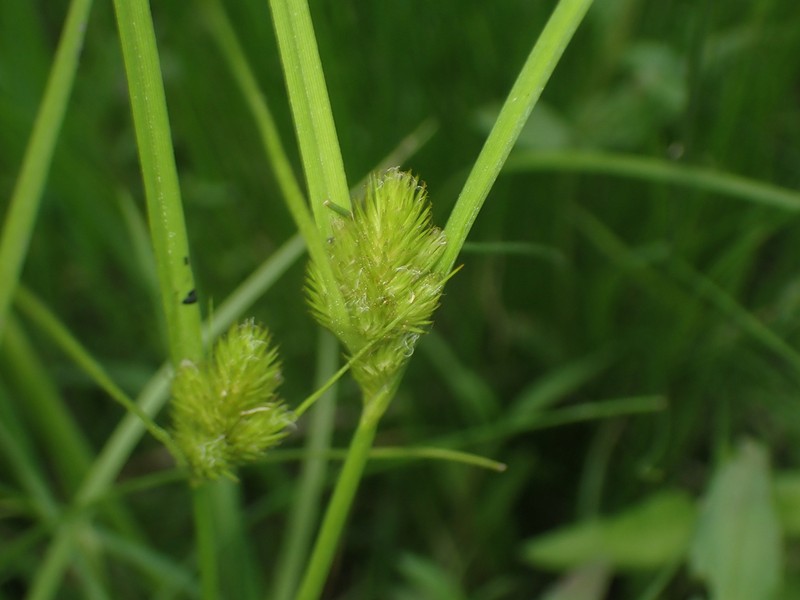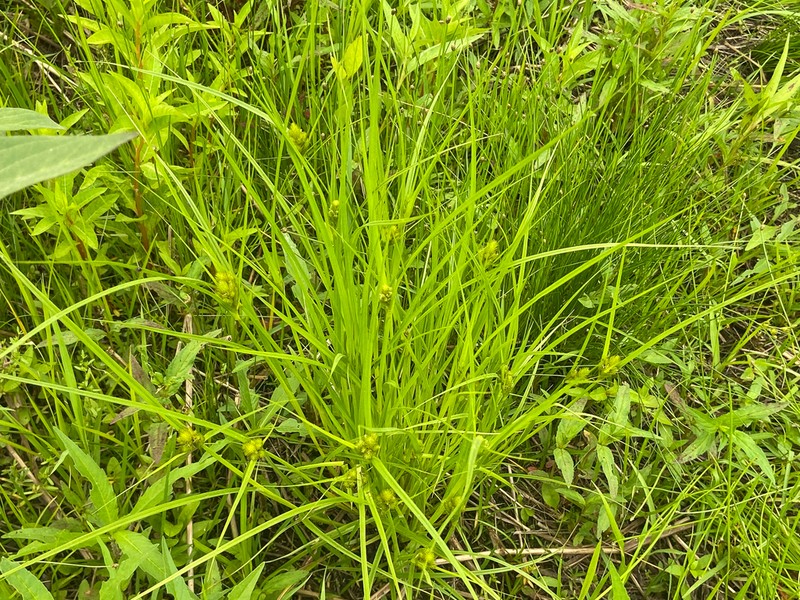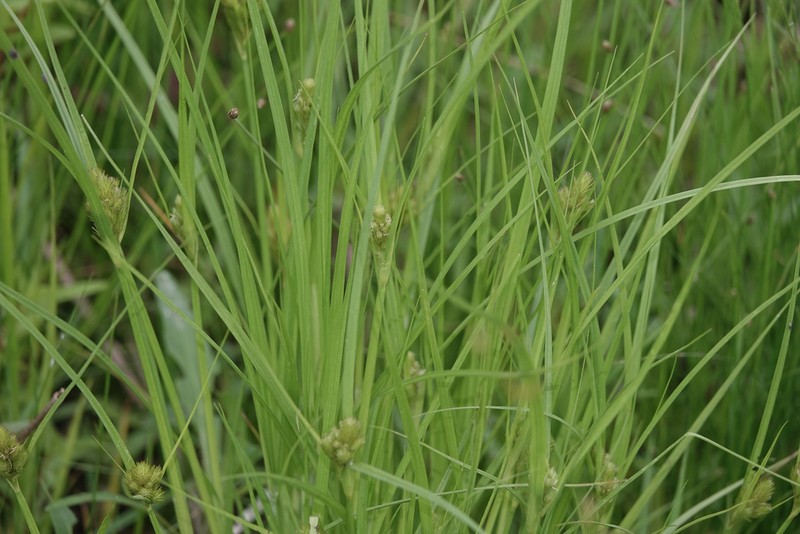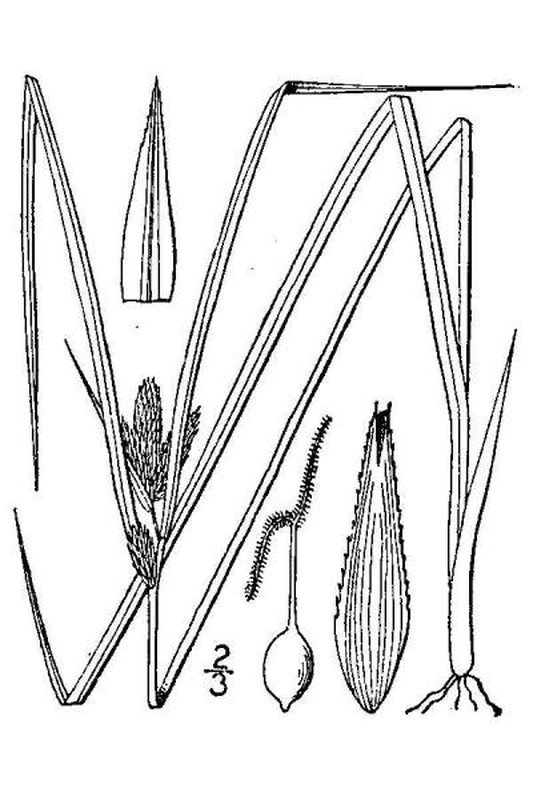Many-headed Sedge
Carex sychnocephala Carey
- Class
- Monocotyledoneae (Monocots)
- Family
- Cyperaceae (Sedge Family)
- State Protection
- Endangered
Listed as Endangered by New York State: in imminent danger of extirpation in New York. For animals, taking, importation, transportation, or possession is prohibited, except under license or permit. For plants, removal or damage without the consent of the landowner is prohibited.
- Federal Protection
- Not Listed
- State Conservation Status Rank
- S1
Critically Imperiled in New York - Especially vulnerable to disappearing from New York due to extreme rarity or other factors; typically 5 or fewer populations or locations in New York, very few individuals, very restricted range, very few remaining acres (or miles of stream), and/or very steep declines.
- Global Conservation Status Rank
- G5
Secure globally - Common in the world; widespread and abundant (but may be rare in some parts of its range).
Summary
Did you know?
The specific epithet sychnocephala means many headed (Fernald 1970). While this species has 3-8 spikes this is not "many" compared to other closely related species.
State Ranking Justification
There is a single extant population and only six historical populations. This was last collected from New York in 1935. New York is this species' southeastern range limit.
Short-term Trends
Short term trends are unknown because the lone extant population was discovered in 2022 and no other populations have been seen in over 70 years.
Long-term Trends
One population is believed to be extirpated because the site where it occurred has been permanently flooded. There are about five other populations that have not been seen in over 90 years. Dedicated surveys to these sites have not been conducted so, it is unknown if they are still extant. Long-term trends are not clear but indicate that this species is at least moderately declining in New York.
Conservation and Management
Threats
A single population was discovered in a disturbed wetland in 2022. Current threats are unknown.
Conservation Strategies and Management Practices
The disturbed draw-down wetland where the exant population exists should be protected from additional disturbance.
Research Needs
Historical populations should be surveyed and similar habitat to the extant population should be sought and searched in St. Lawrence County.
Habitat
Habitat
Carex sychnocephala occurs in swamps and on marly soils adjacent to large rivers (New York Natural Heritage Program 2006). Wet areas, at least seasonally, open, sandy, silty, or peaty shores, banks on limestone (Mastrogiuseppe 2002). Wet meadows and shores (Gleason and Cronquist 1991). Moist sandy-mucky river bottoms and drying lake shores (Voss 1972). Meadows, open woods, and clearings (Fernald 1970).
Associated Ecological Communities
- Calcareous shoreline outcrop*
(guide)
A community that occurs along the shores of lakes and streams on outcrops of calcareous rocks such as limestone and dolomite. The vegetation is sparse; most plants are rooted in rock crevices.
- Cobble shore wet meadow*
(guide)
A community that occurs on the cobble shores of lakes and streams where the substrate is moist from seepage or intermittent flooding. These communities are likely to be scoured by floods or winter ice floes, but there is apparently no significant accumulation of pack ice.
- Inland calcareous lake shore*
(guide)
The gravelly, sandy, or muddy shore of an inland lake or pond with calcareous water and seasonally fluctuating water levels. There may be few plants and those that are present are usually herbaceous.
- Northern white cedar swamp*
(guide)
A swamp that occurs on organic soils in cool, poorly drained depressions in central and northern New York, and along lakes and streams in the northern half of the state. These swamps are often spring-fed with continually saturated soils. Soils are often rich in calcium. The characteristic tree is northern white cedar, which makes up more than 30% of the canopy cover.
- Riverside ice meadow*
(guide)
A meadow community that occurs on gently sloping cobble shores and rock outcrops along large rivers in areas where winter ice floes are pushed up onto the shore, forming an ice pack that remains until late spring. The ice scours the meadow, cutting back woody plants.
* probable association but not confirmed.
Range
New York State Distribution
Six populations of Carex sychnocephala have been documented from New York, all from the western part of northern New York. New York is at the southeastern edge of this species' range.
Global Distribution
Carex sychnocephala occurs from Alaska, the Northwest Territories, and Quebec south to New York, Michigan, Wisconsin, Missouri, Colorado, Montana, and Washington.
Identification Comments
General Description
Carex sychnocephala is a tufted grass-like plant. It is a perennial although sometimes it grows as an annual which is unusual for this genus. Leaves are 1.2-3.0 mm wide. Reproductive stems are 8-40 cm tall and have at most three leaves. At the summit of the stems are 3-8 densely arranged flower/fruit clusters (spikes). Leaf like bracts, to 25 cm long occur at the base of each spike. Male flowers occur on the lower part of each spike and female flowers/fruits occur on the upper part of each spike. Fruits (perigynia) are 4.6-7.3 mm long.
Identifying Characteristics
Carex sychnocephala is tufted, has very inconspicuous rhizomes, and fibrose roots. It is a perennial but sometimes grows as an annual. Reproductive culms are 8-40 cm tall and have bladeless leaves at their bases. The inflorescences are composed of 3-8 approximate, or the proximal slightly distant, gynecandrous spikes. Proximal bracts are 5-20(-25) cm long and are at least (3-)5 times as long as the inflorescences. Pistillate scales are shorter or longer than the perigynia they subtend. Perigynia are flat and narrowly winged, 0.1-0.15(-0.2) mm wide, on their margins. Perigynia are (4.6-)5.5-7.3 mm long and 0.7-1.2 mm wide.
Best Life Stage for Proper Identification
This species is easiest to identify when it has just immature to mature fruits but the fruits are not yet easily shedding.
Similar Species
Carex sychnocephala is superficially similar to members of section Ovales. It can be distinguished from these species by its leaf like proximal bracts, 5-20(-25) cm long, that are at least 3-5 times as long as the inflorescences. Additionally, it has very narrow perigynia, 0.7-1.2 mm wide, which separates it from most species in section Ovales.
Best Time to See
Fruits start to form in July and can be found on the plants through August. At the end of this season the fruits are shedding. Therefore, the best time to survey for this specis is from the second week in July till mid August.
- Fruiting
The time of year you would expect to find Many-headed Sedge fruiting in New York.
Many-headed Sedge Images
Taxonomy
Many-headed Sedge
Carex sychnocephala Carey
- Kingdom Plantae
- Phylum Anthophyta
- Class Monocotyledoneae
(Monocots)
- Order Cyperales
- Family Cyperaceae (Sedge Family)
- Order Cyperales
- Class Monocotyledoneae
(Monocots)
- Phylum Anthophyta
Additional Common Names
- Sedge
Comments on the Classification
Carex sychnocephala is currently placed in section Cyperoideae, a section with only two species and only one from North America (Mastrogiuseppe 2002). Previous authors (Fernald 1970, Voss 1972, Gleason and Cronquist 1991) placed this species in the very similar section Ovales.
Additional Resources
Best Identification Reference
Mastrogiuseppe, J. 2002. Carex Linnaeus sect. Cyperoideae G. Don. Pages 331-332 in Flora of North America Editorial Committee (editors), Flora of North America, north of Mexico, Volume 23, Magnoliophyta: Commelinidae (in part): Cyperaceae. Oxford University Press, New York, New York, USA. 608pp + xxiv.
Other References
Fernald, M.L. 1950. Gray's manual of botany. 8th edition. D. Van Nostrand, New York. 1632 pp.
Gleason, Henry A. and A. Cronquist. 1991. Manual of Vascular Plants of Northeastern United States and Adjacent Canada. The New York Botanical Garden, Bronx, New York. 910 pp.
Holmgren, Noel. 1998. The Illustrated Companion to Gleason and Cronquist's Manual. Illustrations of the Vascular Plants of Northeastern United States and Adjacent Canada. The New York Botanical Garden, Bronx, New York.
New York Natural Heritage Program. 2010. Biotics database. New York Natural Heritage Program. New York State Department of Environmental Conservation. Albany, NY.
New York Natural Heritage Program. 2024. New York Natural Heritage Program Databases. Albany, NY.
Reschke, Carol. 1990. Ecological communities of New York State. New York Natural Heritage Program, New York State Department of Environmental Conservation. Latham, NY. 96 pp. plus xi.
Voss, E.G. 1972. Michigan Flora, Part I. Gymnosperms and Monocots. Cranbrook Institute of Science Bulletin 55 and the University of Michigan Herbarium. Ann Arbor. 488 pp.
Weldy, T. and D. Werier. 2010. New York flora atlas. [S.M. Landry, K.N. Campbell, and L.D. Mabe (original application development), Florida Center for Community Design and Research http://www.fccdr.usf.edu/. University of South Florida http://www.usf.edu/]. New York Flora Association http://newyork.plantatlas.usf.edu/, Albany, New York
Links
About This Guide
Information for this guide was last updated on: November 4, 2022
Please cite this page as:
New York Natural Heritage Program. 2024.
Online Conservation Guide for
Carex sychnocephala.
Available from: https://guides.nynhp.org/many-headed-sedge/.
Accessed April 16, 2024.



